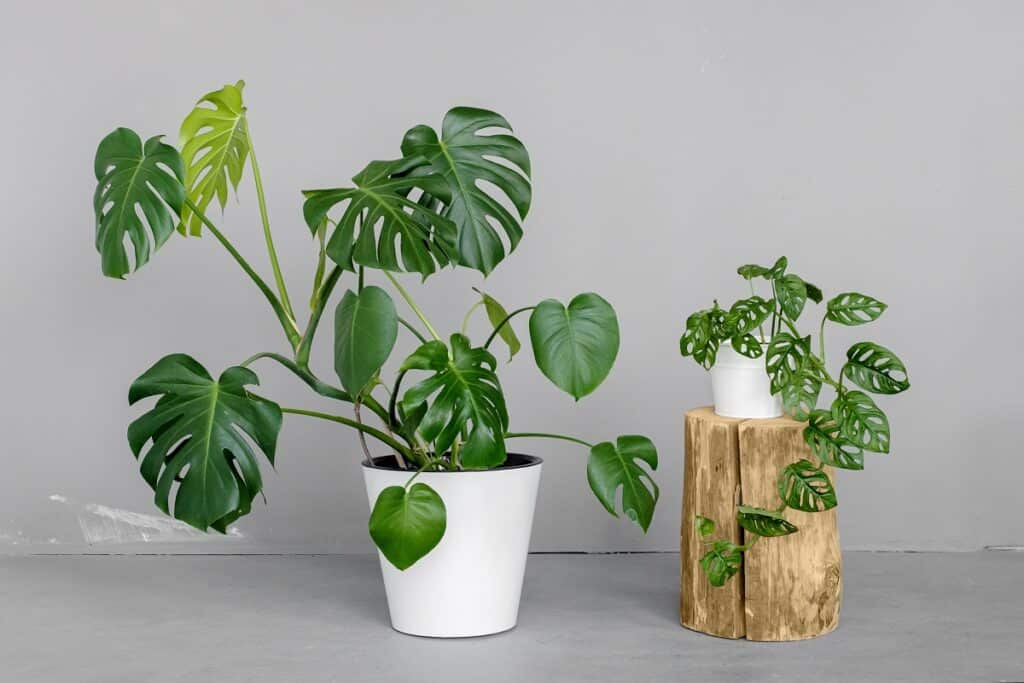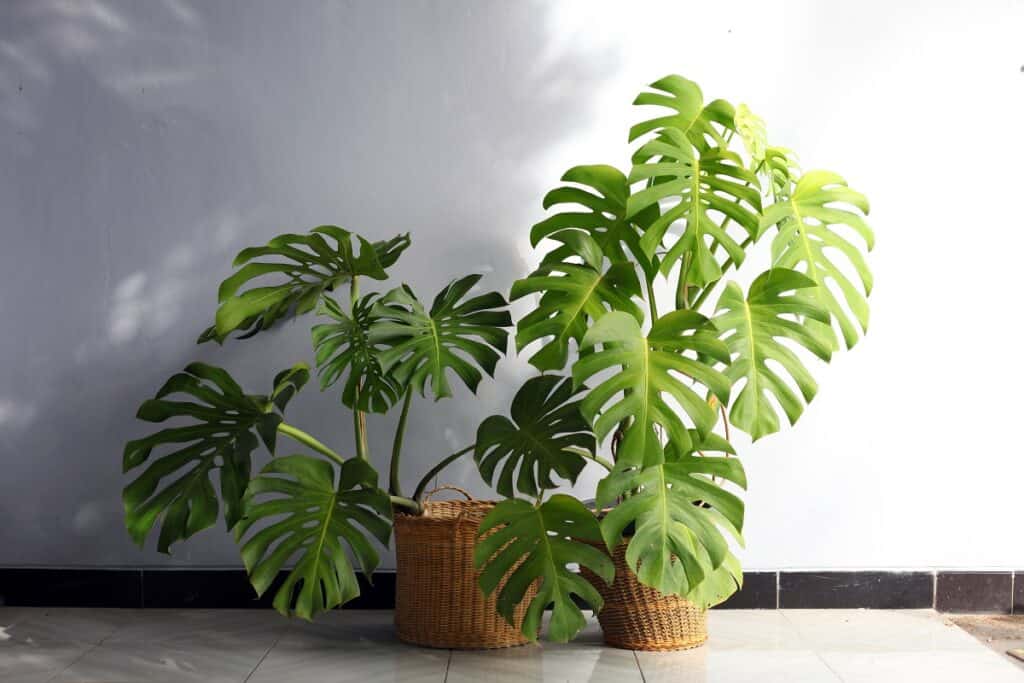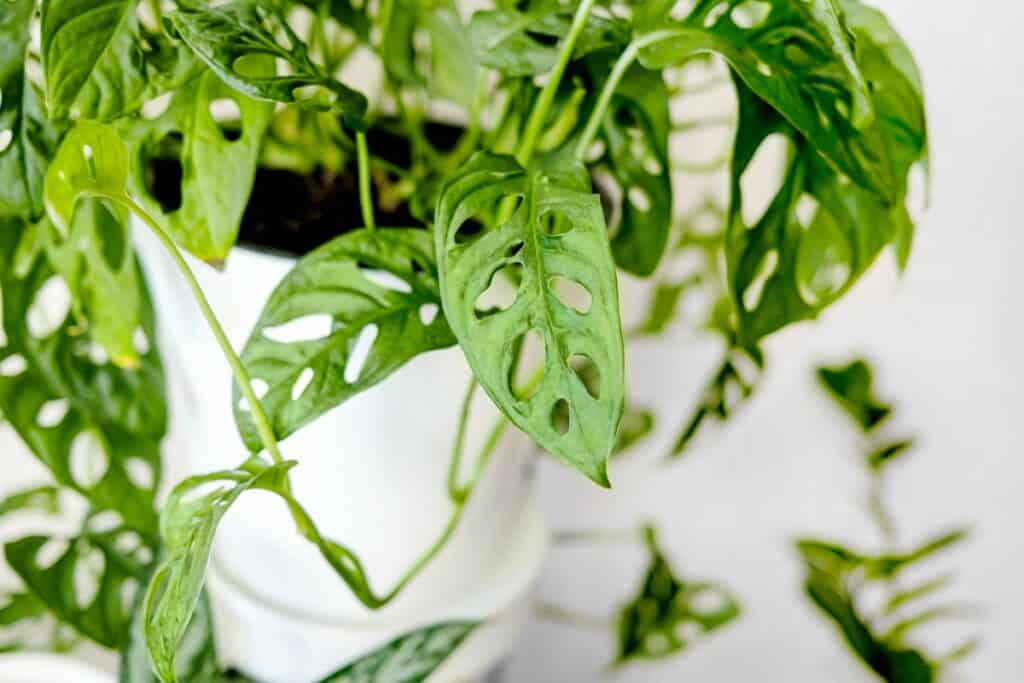Are you looking to add a tropical touch to your home or garden? Monstera plants, also known as “Swiss cheese plants,” are a popular choice due to their distinctive split leaves and easy care. But if you’re considering adding a Monstera to your collection, you may be wondering: how fast do Monstera grow? The answer depends on a few factors, including the type of Monstera, the care it receives, and its environment.
In this blog, we’ll explore the growth rate of Monstera plants and offer tips on how to care for them to encourage healthy, rapid growth. So, if you’re wondering how fast Monstera grows, read on to find out!

Contents
- 1 How Fast Do Monstera Grow?
- 2 What Factors Affect Monstera Growth Rate?
- 3 Best Environmental Conditions For Monstera Growth
- 4 Different Varieties Of Monstera And Their Growth Patterns
- 5 Tips For Maximizing Monstera Growth
- 6 Frequently Asked Questions
- 6.1 How do you speed up Monstera growth?
- 6.2 Does Swiss cheese Monstera grow fast?
- 6.3 Which Monstera is easiest to grow?
- 6.4 How often should a Monstera grow a new leaf?
- 6.5 Why is my Monstera growing so slowly?
- 6.6 How do I get my Monstera leaves to grow bigger?
- 6.7 How do you get more shoots on Monstera?
- 6.8 Does Monstera grow faster in water?
- 6.9 Is Monstera a slow grower?
- 6.10 How long do Monstera plants live?
- 6.11 Do Monsteras like smaller pots?
- 6.12 How long does it take for a Monstera to grow tall?
- 7 Conclusion
How Fast Do Monstera Grow?
Monstera plants are known for their beautiful foliage and unique shape, making them a popular choice for indoor gardens. But how fast do Monstera plants actually grow? The answer is surprisingly fast.
A Monstera plant typically grows between one to three feet per year, depending on the conditions and variety of the plant. Some Monstera species, such as Monstera adansonii, are known for their rapid growth and can grow up to several feet per year. However, other Monstera species may grow more slowly. In general, it can take several years for a Monstera to reach its full potential.
What Factors Affect Monstera Growth Rate?

Growth rate is one of the most important factors when considering how fast a Monstera plant will grow. While Monsteras are generally fast-growing plants, there are a few factors that can affect their rate of growth.
The first factor that affects Monstera’s growth rate is the amount of sunlight it receives. Monsteras prefer indirect sunlight and do best in bright, indirect light. If the plant is placed in direct sunlight, it may cause the leaves to scorch and stunt the growth of the plant.
The second factor is the amount of water the Monstera receives. Too much water can cause the roots to rot and stunt the growth of the plant. It is best to water the plant when the soil is dry to the touch, then wait until the soil is dry again before watering.
The third factor is the type of soil the Monstera is planted in. Monsteras prefer light, well-draining soil. If the soil is too compact, it can inhibit the growth of the plant. It is best to use a soil mix specifically for Monsteras.
Finally, the temperature can affect the growth rate of the Monstera. Monsteras prefer temperatures between 65-85 degrees Fahrenheit. If the temperature is too cold, the plant will not grow as quickly as it would in optimal temperatures.
Best Environmental Conditions For Monstera Growth
Monstera plants are tropical plants that grow best in warm, humid environments with indirect light. To ensure the best growth conditions for a monstera plant, it is important to maintain the right temperature, sun exposure, and humidity levels.
Temperature is an important factor in monstera growth. The ideal temperature range is between 65 and 80 degrees Fahrenheit (18-27 degrees Celsius). If the temperature drops below 65 degrees Fahrenheit, the plant may become stressed and stunt its growth. If the temperature rises above 80 degrees Fahrenheit, the plant may become damaged due to the heat.
The amount of light a monstera plant receives should also be monitored. Monstera plants prefer bright, indirect light, which is best provided by a south- or east-facing window. Direct sunlight can cause damage to the leaves, so it is important to monitor the amount of light the plant receives and adjust accordingly.
Lastly, humidity is an important factor in monstera growth. The ideal humidity level for monstera plants is between 60-90%. If the humidity is too low, the plant may become stressed and stunt its growth. To increase the humidity levels, try misting the leaves of the plant or using a humidifier.
By following these guidelines, you can ensure the best environmental conditions for monstera growth. With the right temperature, sun exposure, and humidity levels, your monstera plant will thrive and grow to its full potential.

Different Varieties Of Monstera And Their Growth Patterns
Monstera is a genus of over 50 species of flowering plants native to tropical regions of the Americas and Southeast Asia. The most popular variety of Monstera is the Monstera Deliciosa, otherwise known as the Swiss Cheese Plant. This variety of Monstera has large, perforated, heart-shaped leaves and grows up to 20 feet tall. Other popular varieties include the Monstera Adansonii (Fenestraria), which has small, oval leaves with fenestrations, or small openings, and grows up to 6 feet tall. The Monstera Obliqua is a climbing variety with long, oblong leaves that can reach 20 feet in height. Finally, the Monstera Borsigiana is a vining variety with long, pointed leaves and grows up to 30 feet tall.
No matter the variety, Monstera grows best in moist, well-draining soil and bright, indirect sunlight. All Monstera varieties prefer high humidity and warm temperatures, so they are often grown as houseplants. Monstera grows relatively quickly and can grow up to 1-2 feet per year. The Monstera Deliciosa and Obliqua varieties tend to grow faster than the more compact Fenestraria and Borsigiana varieties.
When Monstera is grown in ideal conditions, it can grow rapidly and put out new leaves more frequently. However, if the plant is exposed to too much direct sunlight, it can slow its growth rate and become stunted. Additionally, if the soil is too dry, it can cause the leaves to yellow, which can lead to the plant’s death if not addressed quickly.
When cared for properly, Monstera can be a beautiful addition to any home and can grow quickly and bountifully.
Tips For Maximizing Monstera Growth
1. Provide the Right Environment: Monstera plants prefer warm temperatures and high humidity, so make sure to place them in an area that meets these conditions. You may also want to consider providing some shade or filtered light if you are placing your Monstera outdoors.
2. Water Regularly: Monstera plants like to be watered on a regular basis, so check the soil regularly to make sure it is not dry. If the soil is dry, water the plant until moisture is seen coming out of the drainage holes at the bottom of the pot.
3. Use Fertilizer: Monstera plants enjoy a balanced fertilizer that is high in nitrogen, phosphorus, and potassium. You should apply this fertilizer once a month in the spring and summer, and every other month in the fall and winter.
4. Repot: Repotting your Monstera can help promote root growth and healthy leaves. Repotting should be done when the plant has outgrown its current pot or every two to three years in a larger pot with fresh soil.
5. Monitor for Pests: Monitor your Monstera for signs of pests, such as aphids and mites. If you do see signs of pests, treat the plant with a natural pesticide or insecticidal soap.
Frequently Asked Questions
How do you speed up Monstera growth?
To speed up Monstera growth, provide the plant with optimal growing conditions, including bright indirect light, well-draining soil, and regular watering (allowing the soil to dry out slightly between waterings). Fertilizing the plant with a balanced fertilizer every month during the growing season can also help promote growth.
Does Swiss cheese Monstera grow fast?
Swiss cheese Monstera, or Monstera deliciosa, is known for its rapid growth and can grow up to several feet per year. However, like all plants, its growth rate can be affected by factors such as lighting, watering, and fertilizing.
Which Monstera is easiest to grow?
Some types of Monstera, such as Monstera deliciosa and Monstera adansonii, are relatively easy to grow and are popular choices for beginners. However, all plants have specific care requirements, so it’s important to research the specific needs of the type of Monstera you choose.

How often should a Monstera grow a new leaf?
Monstera plants typically grow a new leaf every month or so, although this can vary based on the plant’s growing conditions and the type of Monstera.
Why is my Monstera growing so slowly?
There can be several reasons why a Monstera plant may be growing slowly. These can include:
- Insufficient light: Monstera plants thrive in bright, indirect light and may struggle to grow if they are not getting enough light.
- Over- or under-watering: Proper watering is crucial for the health and growth of a Monstera plant. Overwatering can lead to root rot, while underwatering can cause the leaves to droop and the plant to stop growing.
- Poor soil quality: Monstera plants prefer well-draining soil that is rich in organic matter. If the soil is too heavy or lacks nutrients, the plant may struggle to grow.
- Lack of nutrients: Fertilizing the plant with a balanced fertilizer every month during the growing season can help provide the nutrients the plant needs for healthy growth.
- Pest infestation: Pests such as aphids, mealybugs, and spider mites can damage a Monstera plant and hinder its growth. Regularly inspecting the plant for pests and treating infestations as needed can help promote healthy growth.
By addressing these potential issues and providing your Monstera with proper care and growing conditions, you can help encourage healthy, rapid growth.
How do I get my Monstera leaves to grow bigger?
There are a few steps you can take to encourage larger leaves on your Monstera plant:
- Provide the plant with bright, indirect light. Monstera plants thrive in bright, indirect light and may struggle to grow larger leaves if they are not getting enough light.
- Water the plant regularly, allowing the soil to dry out slightly between waterings. Overwatering or underwatering can both contribute to smaller leaves.
- Use a well-draining soil mix and repot the plant into a pot that is slightly larger than its current one if necessary. Monstera plants prefer a slightly cramped root system, but if the roots become too crowded, the plant may struggle to absorb sufficient nutrients and water, leading to smaller leaves.
- Fertilize the plant regularly during the growing season with a balanced fertilizer. A lack of nutrients can lead to smaller leaves.
- Prune the plant by removing any damaged or diseased leaves. This can encourage the plant to put its energy into producing new, healthy leaves.
By providing your Monstera with the proper care and growing conditions, you can help encourage the production of larger leaves.

How do you get more shoots on Monstera?
To get more shoots on a Monstera, provide the plant with optimal growing conditions and fertilize regularly during the growing season. You can also propagate the plant by taking stem cuttings and rooting them in soil or water.
Does Monstera grow faster in water?
Monstera plants do not typically grow faster in water. While it is possible to propagate Monstera plants in water, it is not a suitable method for the long-term growth of the plant. Once the roots have developed, the plant should be transferred to a pot with well-draining soil to allow for proper growth.
To promote the healthy, rapid growth of your Monstera plant, provide it with optimal care and growing conditions, including bright indirect light, well-draining soil, and regular watering (allowing the soil to dry out slightly between waterings). Fertilizing the plant with a balanced fertilizer every month during the growing season can also help promote growth.
Is Monstera a slow grower?
Monstera plants can vary in their growth rate, with some species growing more slowly than others. However, even faster-growing varieties of Monstera may appear to grow slowly if they are not provided with optimal care and growing conditions.
How long do Monstera plants live?
Monstera plants can live for many years with proper care. They are known to be long-lived plants and can continue to grow and produce new leaves for many years.
Do Monsteras like smaller pots?
It’s generally best for Monstera plants to be slightly root bound in their pots, as this can help them grow more slowly and maintain a compact size. However, if the plant becomes too large for its pot, it will need to be repotted into a larger container to allow for proper growth.
How long does it take for a Monstera to grow tall?
It can take several years for a Monstera to grow tall, depending on the type of Monstera and the care it receives. Some Monstera species can grow up to several feet per year, while others grow more slowly.
Conclusion
In conclusion, Monstera plants are fast-growing and can grow up to 3 ft in a year if given the necessary care and nutrients. They are an ideal choice for adding a tropical feel to any home or garden and can be grown both indoors and out. With proper attention and care, Monstera can be an attractive addition to any space.
